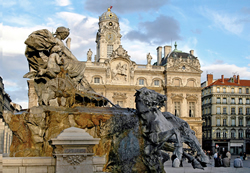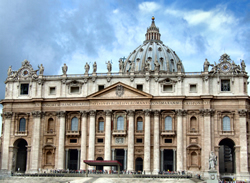Western civilization’s roots lie in the continent of Europe. But Europe is a widely divergent continent, with borders and national loyalties that even today continue to shift and define themselves. No matter where you travel in Europe, you see the echoes and archetypes from which sprang North America. The great colonial powers of Europe left their mark on much of the rest of the world and the cultural, literary, economic and artistic influence of the continent has been profound.
Thanks to GTT Global, the sponsor of this column, you can use this 60-Second Geography article in your own travel agency’s newsletters and websites.
|
60-Second Geography
Europe
|
| Travelers to Europe experience a variety of cultures, languages, customs and dress that are unique and varied and yet encompassed in a relatively small geographic scale. The refinement of centuries of culture provides a real window into Western civilization and into the cultural and psychological background of the nineteenth and twentieth centuries. |
- Encompassing nearly 4 million square miles, Europe stretches from Asia to the
Atlantic and from the Arctic to Africa.
- Europe is the second-smallest continent by surface area, covering about 6.8% of the earth’s land area.
- Europe is comprised of approximately 50 countries, with Russia the largest and Vatican City the smallest.
- Europe’s longest river is the Volga, which winds some 2,193 miles through Russia, flowing at its end into the Caspian Sea. Russia’s Mt. Elbrus, at 18,510 feet above sea level is the continent’s highest point.
- Europe’s climate varies from subtropical near the Mediterranean Sea, to sub arctic at the Arctic Ocean in the north.
- For centuries prior to 1945, Europe suffered as the primary battleground for a series of large-scale wars. A series of international initiatives eventually resulted in a common economic market – the European Economic Community. In 1967 the EEC effected the European Union parliament. Each of the member countries delegates some small portion of their national sovereignty to the EU.
- There are no border controls between those countries that have signed the Schengen Agreement. Thus, a visa granted for any Schengen Agreement signatory country is valid in all other countries that have implemented the treaty.
- The population of Europe is estimated to be 731 million according to the United Nations, approximating 11% of the world population. Europe’s proportionate share of the world’s population is declining.
- European languages can be traced to three Indo-European origins: the Romance languages, derived from the Latin language of the Roman Empire; the Germanic languages, whose ancestor language came from southern Scandinavia; and the Slavic languages of Russia and Eastern Europe. Over the centuries, the geography of Europe and the isolation created by its mountain ranges and rivers, as well as nationalistic trends, created a plethoria of languages in a very small geographic area.
|
 |
 |
 |
| |
| |
| |
| © Copyright 2009 Travmarket. LLC. |
|
| |
|
| |
TRAVEL AGENTS!
Great Airfares to Europe
|

|
|
|
| |
| |
| Travel Agents: You can use the content above on your own website or newsletter, compliments of the supplier sponsor above who has paid for your use of the materials. All you need to do is to follow the directions in the TRO Licensing Agreement. Also, please take a moment to check out the travel supplier that makes your use of this material possible.
To use – Follow the procedure outlined in the TRO Licensing Agreement. Then, right click on this page and choose “View Source”. Copy the HTML and paste the copied html into your own webpages or newsletter.
You may remove advertising. |







